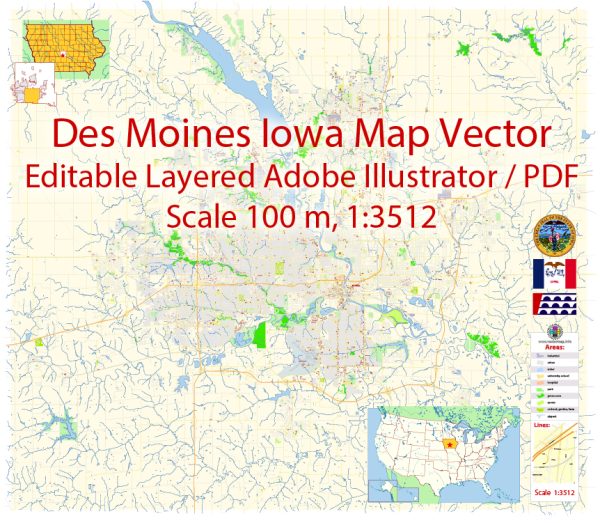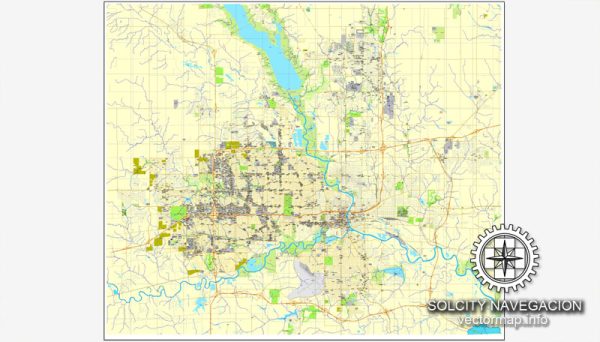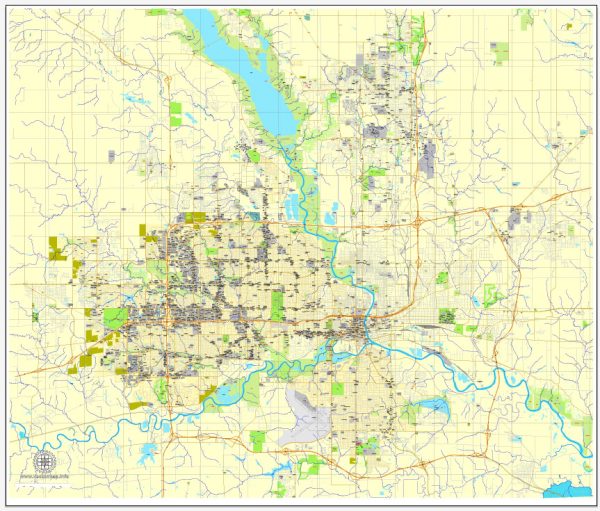Des Moines, the capital and largest city of Iowa, has a rich history of urban development that reflects the broader trends and challenges faced by many American cities. Here’s an overview of the key historical aspects of Des Moines’ urban development:
- Early Settlement and Growth (19th Century):
- Des Moines was originally inhabited by various Native American tribes, including the Sauk and Meskwaki.
- The city was officially platted in 1843, and its early development was influenced by its strategic location along the Des Moines River, which facilitated transportation and trade.
- The city’s growth was further spurred by the construction of railroads, connecting Des Moines to other parts of the region.
- Role in Agriculture and Industry:
- Des Moines played a crucial role in the agricultural economy of Iowa. The city became a center for grain and livestock processing.
- The insurance industry also became a significant economic force in Des Moines, and it continues to be a major industry in the city.
- State Government Influence:
- As the state capital, Des Moines has been shaped by the presence of government institutions. The Iowa State Capitol, completed in the late 19th century, stands as a prominent symbol of the city’s political importance.
- Post-War Economic and Population Growth:
- After World War II, Des Moines experienced significant economic and population growth. The city’s economy diversified, with the expansion of financial services, insurance, and technology sectors.
- This period also saw the development of suburban areas as the population spread outward from the city center.
- Urban Renewal and Redevelopment (Mid-20th Century):
- Like many American cities, Des Moines underwent urban renewal projects in the mid-20th century. Some historic neighborhoods were demolished, and new developments, including office buildings and commercial spaces, were constructed.
- Cultural and Recreational Development:
- Des Moines has invested in cultural and recreational amenities. The Western Gateway Park and the Pappajohn Sculpture Park are examples of efforts to enhance the city’s quality of life.
- Revitalization of Downtown (Late 20th Century – Present):
- In recent decades, Des Moines has focused on revitalizing its downtown area. The renovation of historic buildings, the development of entertainment districts, and the creation of green spaces have contributed to a vibrant urban core.
- Modern Challenges:
- Des Moines faces challenges common to many growing cities, including transportation and infrastructure needs, affordable housing, and balancing economic development with environmental sustainability.
Overall, Des Moines’ urban development has been marked by a mix of historical influences, economic shifts, and a commitment to enhancing the quality of life for its residents. The city continues to evolve, adapting to contemporary challenges while preserving elements of its rich history.




 Author: Kirill Shrayber, Ph.D.
Author: Kirill Shrayber, Ph.D.